NSYSU ties alliance with CSBC Corporation to develop rescue submarine
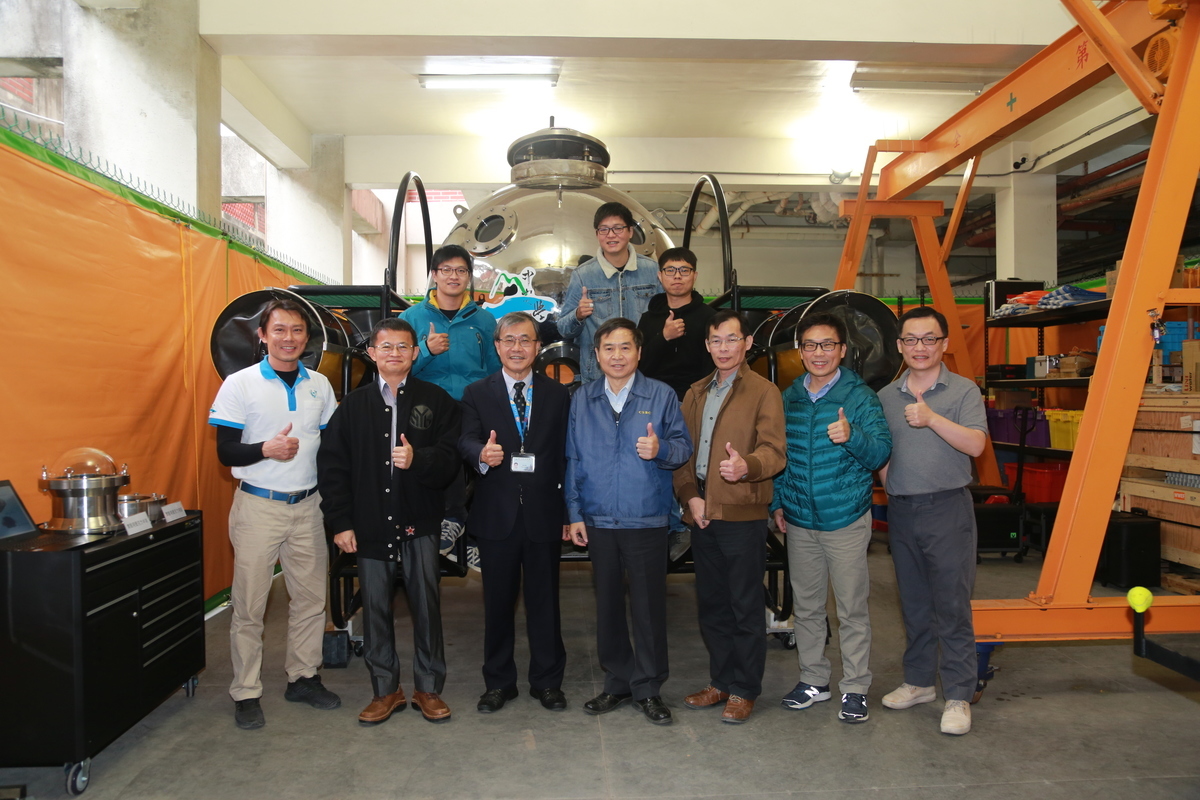
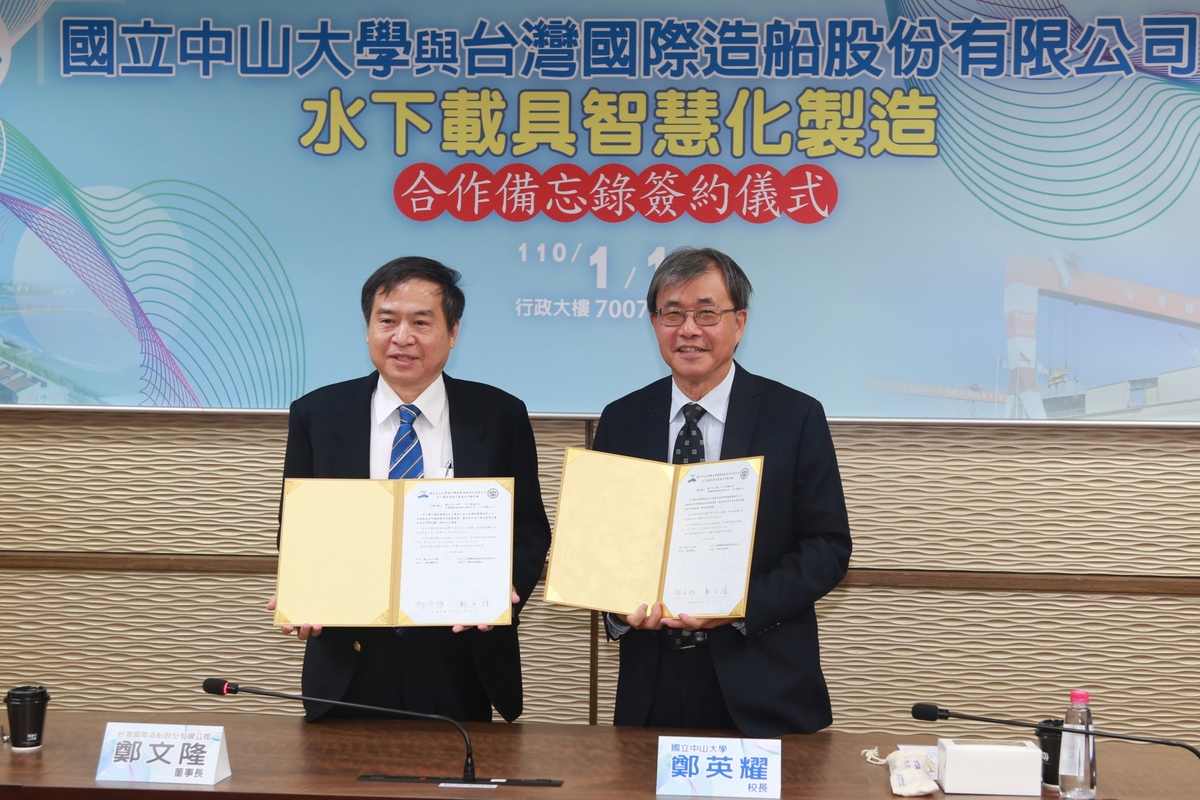
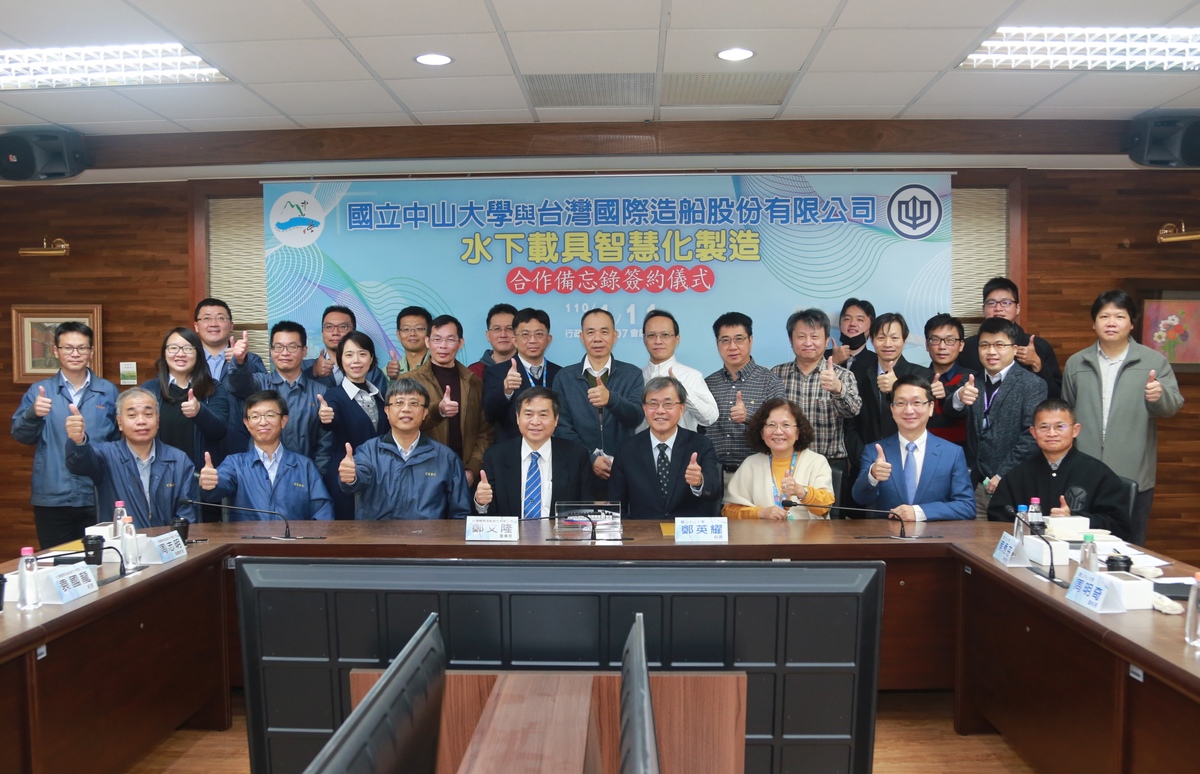
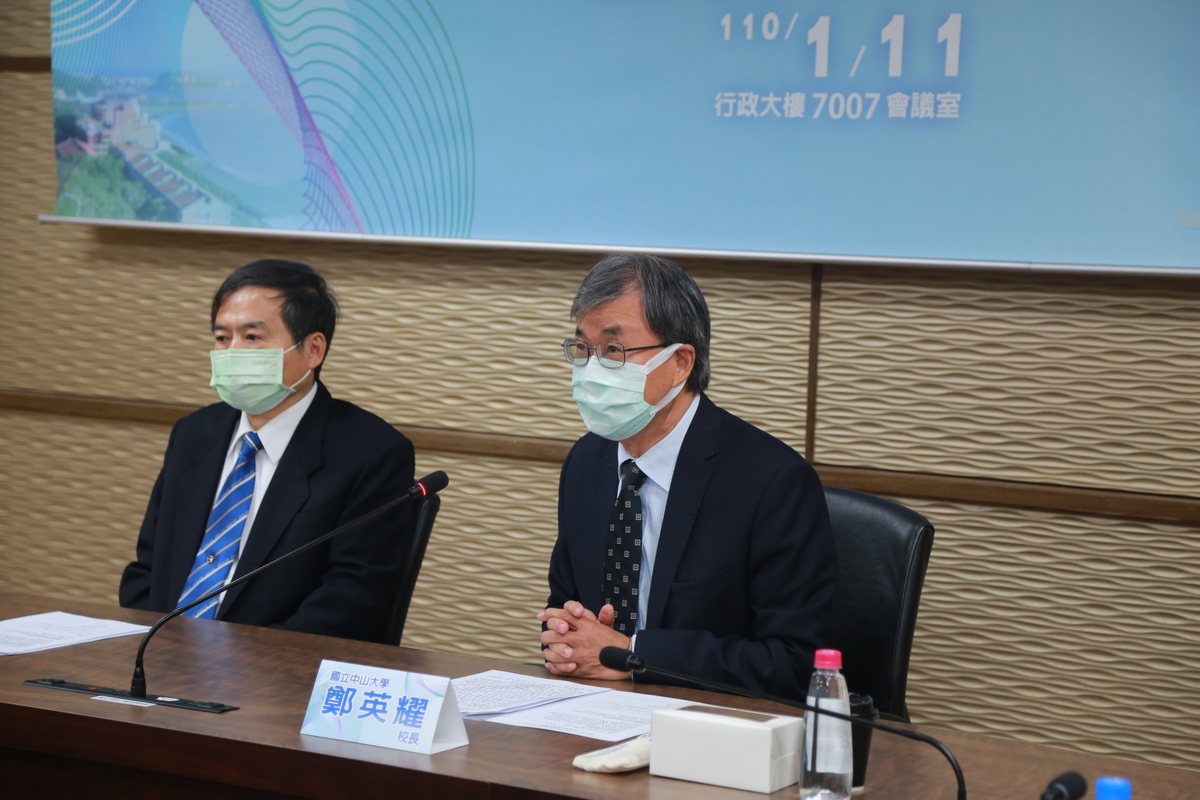
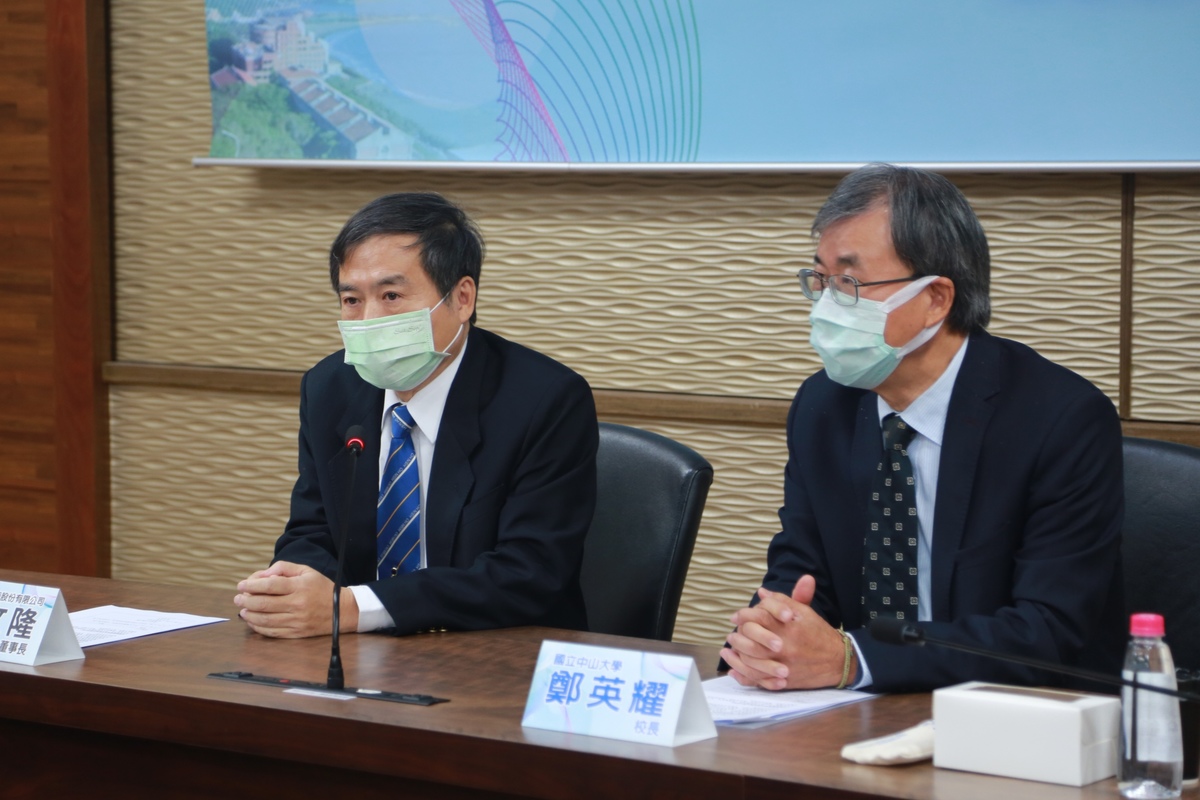
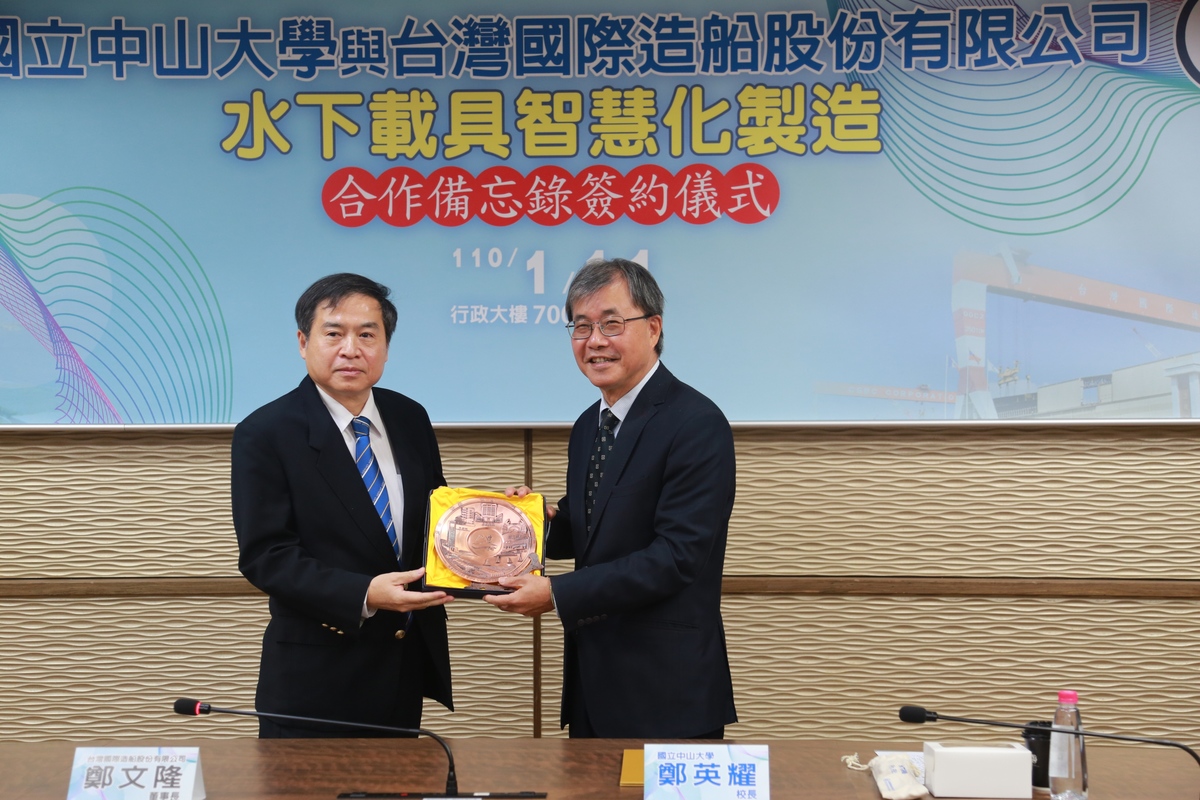
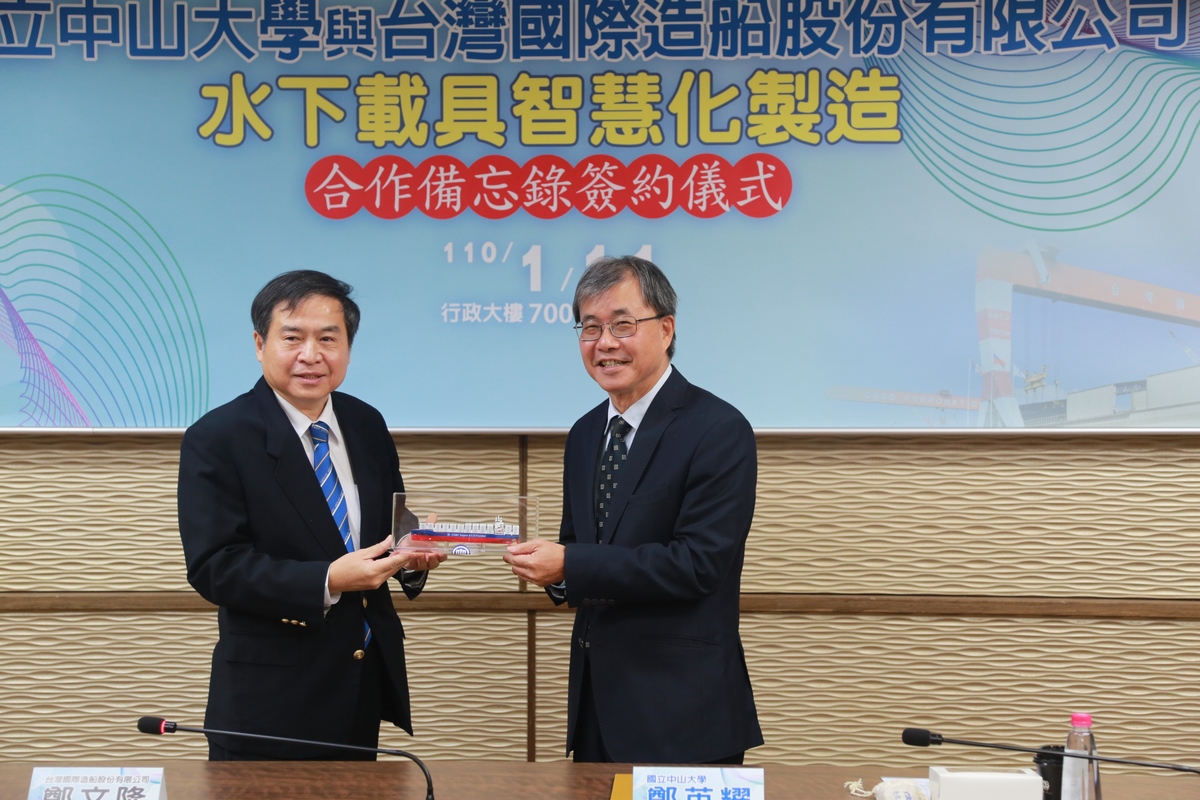
2021-01-14
National Sun Yat-sen University tied an alliance with CSBC Corporation to develop Taiwan’s capacity in the design and development of indigenous underwater vehicles and to jointly cultivate talents; NSYSU President Ying-Yao Cheng and Chairman of CSBC Corporation Wen-Lung Cheng signed the MOU on cooperation. President Ying-Yao Cheng said that NSYSU has the only R&D team in Taiwan that develops underwater manned vehicles without any technological assistance from overseas. The developed underwater vehicles will be widely applied in ocean exploration, humanistic studies, and engineering work. In the future, the team will assist the CSBC Corporation with the introduction of artificial intelligence and providing sonar systems and image/video streaming systems to jointly develop a small-size rescue submarine.
Since an F-16 fighter jet of the R.O.C. Air Force went missing in Hualien a month earlier, the R&D team of NSYSU has been assisting the search for the jet’s wreckage by providing its developed underwater vehicles, sonar systems, as well as and Flexible Image Transport System (FITS) to penetrate the ocean over 1000 meters deep and search for the jet’s blackbox. Besides, the Director of NSYSU Underwater Vehicle R&D Center, Professor Chua-Chin Wang, also pointed out that with the project funding of the Ministry of Science and Technology, the team has already developed an autonomous underwater vehicle (AUV) equipped with AI that at present has the ability to identify nearly 20 kinds of underwater objects and organisms, with a success rate reaching 90%. The vehicle has also deep-sea tracking and obstacle avoidance functions, which, in the future, can be transformed and applied in underwater cultivation, exploration, searching, and rescue missions.
“The first-generation two-pilot underwater vehicle (manned underwater vehicle, MUV) developed by NSYSU’s R&D team has successfully passed the test in the Kaohsiung Port!” Director Chua-Chin Wang emphasized that the two-pilot underwater manned vehicle can operate for 4 to 8 hours underwater at a depth of 20 to 50 m at the beginning testing stage and that it can be used to detect marine currents for power generation, ocean sonar, to study the sea bottom topography, conduct ocean aerosol research, and develop defense-oriented technologies. In the future, this will be the base for integrating the sonar identification technology, underwater communication modulation, fireproof and shockproof design, and various developed systems in two to four years to then conduct a physical test on open waters. The innovative plan for the cooperation with CSBC Corporation, besides implementing AI and the deep-learning technology, includes the establishment of technological foundations for the autonomous development of underwater unmanned vehicles in Taiwan for further development of instrumentation systems, and provision of integrated systems and services for underwater tracing, ocean survey, deep-sea exploration, enemy vessel identification, sonar technology, and communications security.
Chairman of CSBC Corporation Wen-Lung Cheng admitted that NSYSU’s R&D capacity in underwater vehicles, combining numerous engineering and marine science technologies in vehicles, left a deep impression on him and his crew. CSBC Corporation has already been implementing the government’s submarine construction project for nearly four years and in the future, NSYSU will become its top-priority partner to make a major contribution to the Taiwanese society using its outstanding academic capacity and rich practical experience.
In 2006, NSYSU developed its first underwater unmanned remotely controlled vehicle that can operate against ocean currents, and in 2016 – a deep-sea vehicle, which became the highlight technology of the National Energy Program. The following year, the team spent 300 hours on seabed imaging, establishing a record of the operating depth among the autonomously developed vehicles in Taiwan. At present, the team gathered a large amount of research data on the seabed geology, environment, and mineral reserves, especially on the seabed a few thousands meters deep off the southwestern coasts of Taiwan, and areas with possible natural gas hydrates deposited under the seabed. Besides the discovery of methane hydrate, the vehicle penetrated in the sea trench over 1000 meters deep and discovered a new ecosystem and minerals.
National Sun Yat-sen University tied an alliance with CSBC Corporation to develop Taiwan’s capacity in the design and development of indigenous underwater vehicles and to jointly cultivate talents; NSYSU President Ying-Yao Cheng and Chairman of CSBC Corporation Wen-Lung Cheng signed the MOU on cooperation. President Ying-Yao Cheng said that NSYSU has the only R&D team in Taiwan that develops underwater manned vehicles without any technological assistance from overseas. The developed underwater vehicles will be widely applied in ocean exploration, humanistic studies, and engineering work. In the future, the team will assist the CSBC Corporation with the introduction of artificial intelligence and providing sonar systems and image/video streaming systems to jointly develop a small-size rescue submarine.
Since an F-16 fighter jet of the R.O.C. Air Force went missing in Hualien a month earlier, the R&D team of NSYSU has been assisting the search for the jet’s wreckage by providing its developed underwater vehicles, sonar systems, as well as and Flexible Image Transport System (FITS) to penetrate the ocean over 1000 meters deep and search for the jet’s blackbox. Besides, the Director of NSYSU Underwater Vehicle R&D Center, Professor Chua-Chin Wang, also pointed out that with the project funding of the Ministry of Science and Technology, the team has already developed an autonomous underwater vehicle (AUV) equipped with AI that at present has the ability to identify nearly 20 kinds of underwater objects and organisms, with a success rate reaching 90%. The vehicle has also deep-sea tracking and obstacle avoidance functions, which, in the future, can be transformed and applied in underwater cultivation, exploration, searching, and rescue missions.
“The first-generation two-pilot underwater vehicle (manned underwater vehicle, MUV) developed by NSYSU’s R&D team has successfully passed the test in the Kaohsiung Port!” Director Chua-Chin Wang emphasized that the two-pilot underwater manned vehicle can operate for 4 to 8 hours underwater at a depth of 20 to 50 m at the beginning testing stage and that it can be used to detect marine currents for power generation, ocean sonar, to study the sea bottom topography, conduct ocean aerosol research, and develop defense-oriented technologies. In the future, this will be the base for integrating the sonar identification technology, underwater communication modulation, fireproof and shockproof design, and various developed systems in two to four years to then conduct a physical test on open waters. The innovative plan for the cooperation with CSBC Corporation, besides implementing AI and the deep-learning technology, includes the establishment of technological foundations for the autonomous development of underwater unmanned vehicles in Taiwan for further development of instrumentation systems, and provision of integrated systems and services for underwater tracing, ocean survey, deep-sea exploration, enemy vessel identification, sonar technology, and communications security.
Chairman of CSBC Corporation Wen-Lung Cheng admitted that NSYSU’s R&D capacity in underwater vehicles, combining numerous engineering and marine science technologies in vehicles, left a deep impression on him and his crew. CSBC Corporation has already been implementing the government’s submarine construction project for nearly four years and in the future, NSYSU will become its top-priority partner to make a major contribution to the Taiwanese society using its outstanding academic capacity and rich practical experience.
In 2006, NSYSU developed its first underwater unmanned remotely controlled vehicle that can operate against ocean currents, and in 2016 – a deep-sea vehicle, which became the highlight technology of the National Energy Program. The following year, the team spent 300 hours on seabed imaging, establishing a record of the operating depth among the autonomously developed vehicles in Taiwan. At present, the team gathered a large amount of research data on the seabed geology, environment, and mineral reserves, especially on the seabed a few thousands meters deep off the southwestern coasts of Taiwan, and areas with possible natural gas hydrates deposited under the seabed. Besides the discovery of methane hydrate, the vehicle penetrated in the sea trench over 1000 meters deep and discovered a new ecosystem and minerals.
Click Num:
Share
